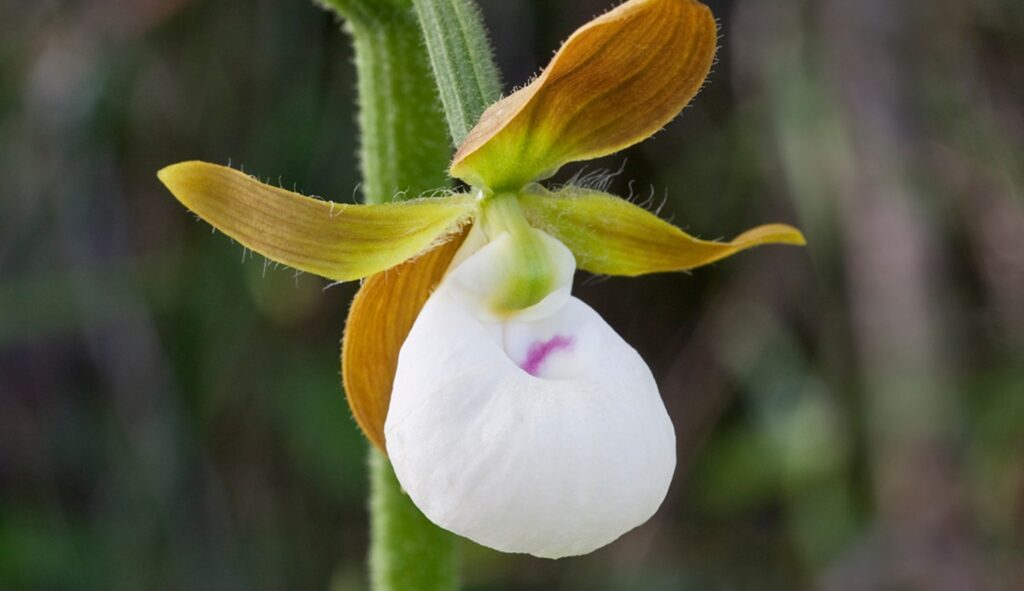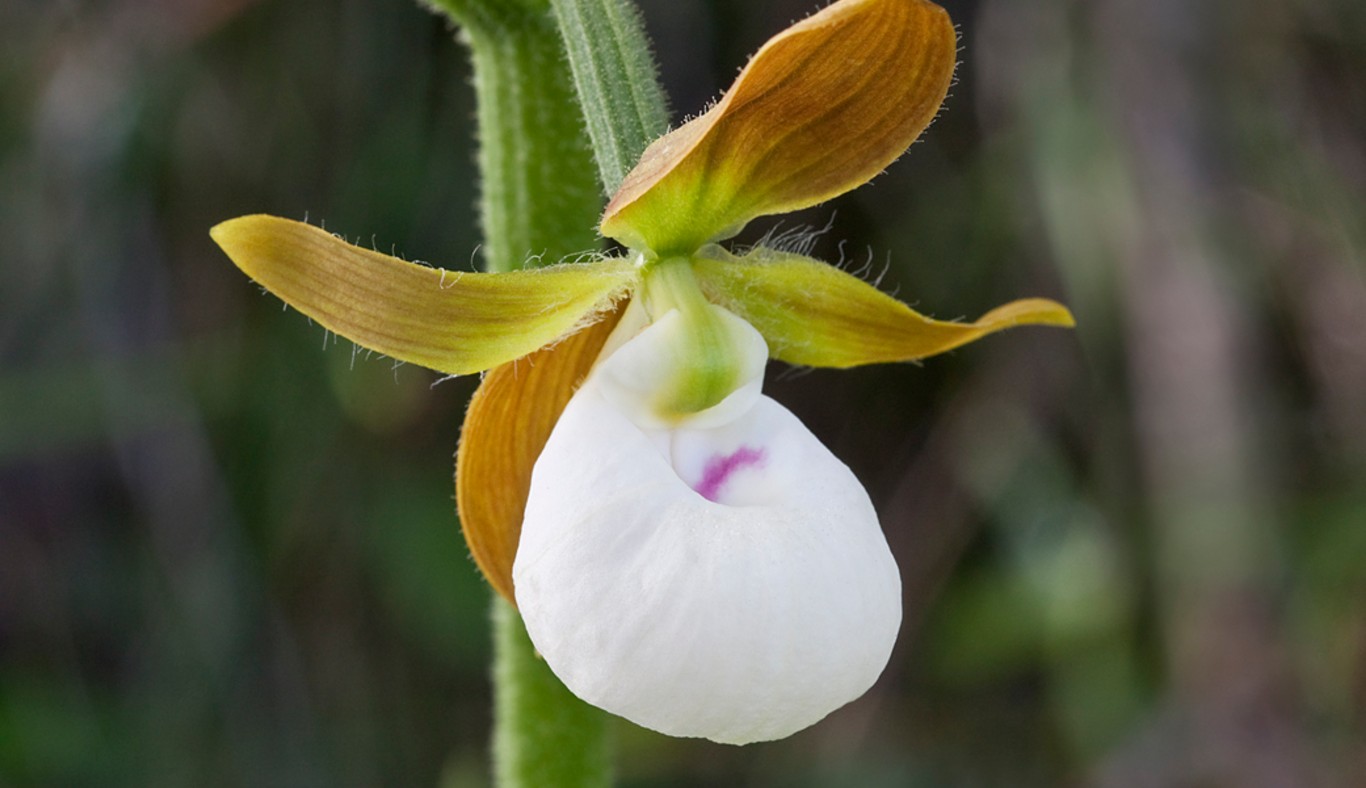Unable to attract bees and other pollinators to its golden pollen, Cypripedium wardii, an orchid species native to Tibet and China, creates “fool’s gold” pollen, a sugary snack that entices insects among its petals whereby they become covered in real pollen.
Pseudopollen, as it’s called, has been observed in orchids before, a species whose true pollen is not edible. For many bees, pollen is a key source of protein—and while nectar is sweet, it can’t sustain them forever.
The beautiful Cypripedium family of orchids are known as “lady’s slipper” orchids, thanks to an upturned bowl-shaped petal arrangement lying at the bottom of their flowers.
This bottom flower contains small hairs that breakdown into a dust that appears like normal pollen.
Orchids are notorious grifters. Not only do some species make this pseudopollen, but others release pheromones that smell like receptive bee or fly females.

It wasn’t known that they gave anything back at all to pollinator, as they don’t produce nectar. If they didn’t produce nectar or scents, and their pollen wasn’t edible, how did orchids reliably secure the service of pollinators?
MORE: The Mind-Blowing Mathematics of Sunflowers
In a study currently awaiting peer review, researchers at the Chinese Academy of Sciences observed 12 solitary bee a hoverflies arrive at C. wardii in the mountains of Sichuan, and begin interacting with the pseudopollen. Later dissection revealed that the pollinators were consuming the fool’s gold for food.
An analysis of the pseudopollen showed they contained lipids, or fats, indicating their nutritional value to the bees.
Speaking with Science on the topic, one botanist thought the only ones deceived by the pseudopollen has actually been the botanists, and that the pollinators know full well the fool’s gold has a benefit to them.
PLANT This Fascinating Flower News in Friends’ News Feeds…




















